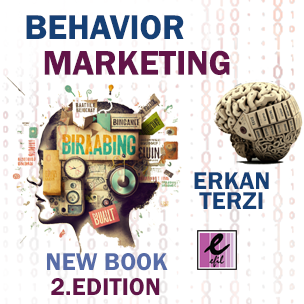The digital world offers enormous potential for brands, but it also creates an environment where mistakes are far less forgiving. With the right strategy, rapid growth can be achieved; however, even small errors can cause significant damage to brand reputation and budgets. For this reason, digital advertising, data analysis, and security processes must operate not independently, but in full integration.
Today, digital advertising is no longer just about publishing banners or sponsored content. It requires working with precise data about users’ behaviors, interests, purchasing tendencies, and platform habits. Targeting algorithms offered by platforms such as Google, Meta, TikTok, and LinkedIn provide significant advantages. However, these algorithms only perform effectively when they are powered by accurate data. Incorrect or incomplete audience targeting leads to wasted impressions, ad fatigue, and budget losses.
Content management is at the heart of any digital advertising strategy. Instead of standard content, brands must create engaging content that builds an emotional connection and provides genuine value to users. If you fail to capture the user’s attention within the first second, the opportunity is lost. Formats such as short video clips, carousel posts, and interactive stories play a major role in driving ad success today.
Digital advertising should not be limited to short-term sales efforts. In the long run, it should also aim to build brand awareness, collect customer data, introduce new products to the market, and guide target audiences toward specific behaviors. If the ultimate goal is to boost sales, trust and relationship-building must come first.
Data analysis is the second critical pillar of this structure. Running digital ad campaigns without deeply understanding and evaluating their outcomes is a major strategic error. Tools like Google Analytics, Meta Business Manager, Hotjar, Yandex Metrica, and Hubspot allow brands to thoroughly analyze user behavior. Metrics such as page view durations, bounce rates, conversion rates, cost-per-click (CPC), cost-per-thousand impressions (CPM), and conversion ratios must be constantly tracked and interpreted.
It is not enough to just perform analysis; meaningful action must be taken based on the data. For example, if a campaign generates a high click-through rate but low conversion, the problem may not be in the advertisement itself but in the landing page experience. Without acting on analytical insights, data remains nothing more than a numerical accumulation.
Another crucial aspect when analyzing data is benchmarking properly. Without knowing the average conversion rates of your sector or platform, you might misinterpret your own results. Benchmarking each advertising channel separately and building strategies accordingly ensures a much more accurate roadmap.
Security is the third vital component of maintaining a sustainable presence in the digital world. Websites, apps, CRM systems, and customer data are constantly under threat. Cyberattacks, data breaches, and phishing attempts are increasing every year. Therefore, brands must invest in robust digital security infrastructures.
SSL certificates must be active on websites, PCI DSS standards must be followed in payment systems, databases must be regularly backed up, and all potential vulnerabilities must be scanned systematically. Customer data must also be collected and processed in compliance with regulations such as GDPR and KVKK, both for legal compliance and brand credibility.
Digital security is not limited to technical measures alone. Human factors also pose a significant risk. Insider threats can be minimized through regular cybersecurity training for employees, teaching them how to recognize suspicious emails, maintain personal password security, and practice secure behaviors across systems.
When digital advertising, data analysis, and security operate as an integrated system, brands achieve not only short-term successes but also long-term, sustainable growth. Although these disciplines may seem distinct, they are interconnected layers of a single structure. A weakness in one area affects the entire system. Brands must approach each area with equal seriousness and dedication to ensure future success.
The digital world moves faster than ever before, and it shows no signs of slowing down. Building sustainable digital strength now will determine which brands survive and thrive tomorrow.


